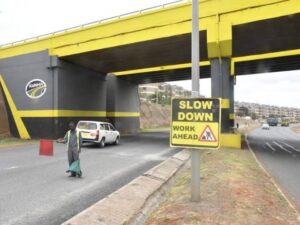MPs Approve Bill to Give Counties Share of Road Maintenance Levy
Share
The National Assembly has passed the Kenya Roads (Amendment) Bill, 2025, a landmark legislation that seeks to streamline road classification and allocate a portion of the Roads Maintenance Levy Fund to county governments for the first time.
The Bill, which amends both the Kenya Roads Act and the Kenya Roads Board Act, introduces reforms aimed at enhancing efficiency, accountability, and equity in road management between the national and county governments.
Lawmakers hailed the move as a step toward strengthening devolution and improving the country’s transport infrastructure.
According to the Bill, all public roads will now be categorized into two classes — national trunk roads and county roads, in line with the devolved system of governance.
This classification aims to eliminate overlapping mandates among agencies while ensuring that both levels of government receive adequate resources for road maintenance, rehabilitation, and development.
CS to Review Road Classifications Every Five Years
Clause 3 of the Bill amends Section 47 of the Kenya Roads Act to mandate the Cabinet Secretary for Roads and Transport to review the classification of roads at least once every five years.
The review is meant to ensure that Kenya’s road network remains up-to-date with infrastructure expansion and evolving transport demands.
A new provision, Section 47A; assigns counties the responsibility of maintaining, rehabilitating, and developing roads within their jurisdictions.
County governments will, however, be required to adhere to national policies and standards in managing their roads.
Counties to Receive 5 Percent of the Roads Fund
In what has been described as a historic milestone for devolution, the Bill allocates 5 percent of the Roads Maintenance Levy Fund (RMLF) directly to county governments.
This is the first time counties will receive a share of the levy to support road works under their purview.
Under the proposed funding structure, the Kenya National Highways Authority (KeNHA) will receive 36 percent of the Fund, the Kenya Rural Roads Authority (KeRRA) 21 percent for constituency roads and 10 percent for inter-constituency link roads, and the Kenya Urban Roads Authority (KURA) 14 percent.
The Kenya Wildlife Service (KWS) and Kenya Roads Board (KRB) will receive 1 percent and 1.5 percent respectively, while the State Department for Roads and the Ministry of Roads and Transport will each get 1.5 percent and 10 percent.
New Accountability Measures Introduced
To ensure transparency in the use of funds, each county government will be required to establish a road works department, open a special purpose account at the Central Bank of Kenya, and submit annual road programmes to the Kenya Roads Board for approval.
The Kenya Roads Board will be tasked with monitoring and evaluating all projects financed through the Fund.
It will also be empowered to take corrective action where standards are not met.
The passage of the Bill marks a significant milestone in Kenya’s infrastructure governance, with legislators expressing optimism that it will close gaps in funding and management that have long hindered road development, particularly at the county level.
The lawmakers affirmed during the debate that the reform brings fairness to our road management system and ensures that counties can now play a meaningful role in improving local infrastructure.
The Bill now awaits assent by President William Ruto before it becomes law.

A section of Kenyan road constructed under KeNHA. PHOTO/ KeNHA.
You Might also Like















